Many of us want to use safe skin care, but it can be challenging to know what skin care ingredients to avoid. Here is an in-depth look at ingredients to avoid in makeup and skin care.
Have you ever taken the time to read the ingredients in the tiny print on the back of all those bottles in your bathroom. (Can you even still read them without a magnifying glass??? I'm starting to need one.)
Although it probably isn't your idea of a good time, it is critical to help you avoid toxins in your personal care products. There are so many skincare ingredients to avoid.
Evidence suggests that these toxins can disrupt your hormones, and many may be carcinogenic. The challenge is that it can be difficult to know which skin care products to avoid since many have ingredients that are not on the labels.
It is easy to think that there is no way our government would allow something that isn’t safe on the market, but that just isn’t the case.
If you can believe it, there are 1371 personal care ingredients banned in the European Union, but the FDA has only banned eleven.
Many of the companies that you know and may trust have been forced to change their formulas to sell in Europe, yet they knowingly continue to sell a more toxic version in the United States.
BECAUSE THEY CAN, not because it is safe.
There is also a common practice of removing one harmful ingredient while leaving the rest and then bragging that the product is "sulfate free" or "paraben-free" to lure consumers into believing they are safe
The average women uses 12 personal care product a day and men use an average of six. The volume of products we use means that many of us are being exposed to up to 125 different chemicals on a given day. YIKES!
The reality it that it is up to each of us to look after ourselves and our families. The first step: Being educated!
Top 24 Skin Care Ingredients to Avoid:
1. 1,4-dioxane
- Found in baby products, children's bath products such as body soaps, baby shampoos and bubble bath, hair relaxers, curl creams, dyes, shampoo, sunless tanners, body lotions, detergents, face creams and anti-aging products. 1,4-dioxane is found in 22% of all personal care products and 67% of children's bath products according to the Environmental Working Group.
- Ingredients to look for: polyethylene, polyethylene glycol (PEG), polyoxyethylene, ethoxylated ingredients, sodium laureate sulfate, polysorbate, -eth - or oxynol-, oleths. It may also be found in Sodium laureth sulfate. Most often, however, it is not on the ingredients list because it is not what the FDA considers an "intended ingredient". A study by the Environmental Working Group found that at least one-quarter of all personal-care products sold in the United States is contaminated with 1,4-dioxane. Another study looked at 24 baby products and found that 18 of them were contaminated with 1,4-dioxane.
- Why is it listed among Skin Care Ingredients to Avoid? This is scary stuff! A known animal carcinogen it is also believed to cause cancer in humans. (According to the EPA.) In one study, rats and mice drank water contaminated with 1,4-dioxane and developed liver and nose cancer. Long-term studies showed it impacts the kidneys as well. The FDA has no upper limits in cosmetics, but the limit in pills and spermicides is ten parts per million. In 2007, a study by the Campaign for Safe Cosmetics found some products are using twice this amount.
- "1,4 shows you how tricky byproducts can be. There seems to be a lot of concrete evidence on it that makes you want to run the other direction when you find out it's not listed on labels." ~ Dr. Michael DiBartolomeis
2. Chemical Sunscreens
- Found in sunscreens (big surprise), creams, makeup and lip balms with SPF. Chemical sunscreens absorb the UV rays before they cause damage to the skin.
- Ingredients to look for: padimate-O, PABA, octinoxate, benzophenone, oxybenzone, octyl-methoxycinnamate, homosalate. Generally speaking, if something doesn't explicitly say that it is a mineral or physical blocker and claims to have SPF, it is a chemical sunscreen.
- Why is it listed among Skin Care Ingredients to Avoid? For starters, chemical sunscreens aren't all that great at protecting you from UVA rays, and this can lead to accelerated aging. PABA (Padimate-O) is suspected to be carcinogenic. Oxybenzone (benzophenone) is absorbed very quickly by the skin. It can accumulate in the fatty tissues of the body and is linked to cellular damage, low birth weight, allergies and hormone disruption. In fact, 97% of us have it in our urine. Homosalate and octyl methoxycinnamate (octinoxate) are linked to hormone disruption.
3. Coal Tar
- Found in hair dyes, dandruff, and psoriasis shampoo, anti-itch creams, cosmetics, mouthwash, and toothpaste.
- Ingredients to Look For: When it is the active ingredient you will see it listed as an ingredient. However when its constituent parts are used it does not appear on the label.
- What's Wrong With It? Coal Tar is a known carcinogen that is banned in Europe. Sadly, it is still used here. Coal tar is derived from petroleum. It can be contaminated with heavy metals that are toxic to the brain.
The carcinogenicity or coal tar has been shown in animal studies and studies in occupational settings.
4. Lead
- Found in eyeliners, lipsticks, lip glosses, lip conditioners, and hair dye. It is usually found as a contaminant and will not be listed on labels. In 2009, the FDA conducted a study and found lead in all chemicals tested. On average the levels found exceeded the FDA's acceptable levels for candy by ten times.
- Ingredients to Look For: Thimerosal and variations. But again, they are usually not listed at all because it is a contaminant, not an ingredient.
- What's Wrong With It? Lead is a known carcinogen and a hormone disrupter. Despite this, the FDA has not set a limit for lead in cosmetics though it has been found in lipstick in volumes about four times the FDA safety limit for candy. It is readily absorbed through the skin into the blood and can accumulate in bone. Although dying from poisoning is possible, it is more likely to lead to low birth weights, miscarriages, depression and aggressive behavior. Babies exposed to lead in the womb can develop serious complications including seizures, attention disorders, and brain damage. By the way, buying "natural" lipstick doesn't protect you from lead. It has been detected in brands like Burt's Bees.
The problem with lead in the body is that it mimics other biologically important metals such as iron, calcium, and zinc. By taking the place of these metals in individual proteins and molecules, lead interferes with normal biological processes. For example, it hampers certain neurotransmitters responsible for learning and brain development. Lead also interferes with enzymes critical to the production of red blood cells, leading to a form of anemia similar to that caused by iron deficiency. Gastrointestinal symptoms of lead poisoning include constipation, diarrhea, vomiting, metallic taste, and weight loss." Dr. Edward C Geehr, former Clinical Associate Professor of Medicine and Surgery at the University of California, San Francisco.
The following are affiliate links. We are a participants in the Amazon Services LLC Associates Program, an affiliate advertising program designed to provide a means for us to earn fees by linking to Amazon.com and affiliated sites.
5. Phthalates
- Found in hair spray, hair gel, deodorant, lipstick, lotion, nail polish, fragrance, perfume, nail strengtheners, eyelash glue
- Ingredients to look for: Phthalate, DBP, DEHP, DMP, DEP, with variations on dibutyl/diethyl ester or 1,2-benzenedicarboxylate, fragrance.
- What's Wrong With It? Phthalates are known hormone disruptors and suspected carcinogens. They are especially toxic to fetuses and can cause birth defects in male babies. They can interfere with fertility and have been linked to low sperm count. They are also suspected in Endometriosis and Polycystic Ovarian Syndrome, breast cancer, diabetes, and obesity. Most recently, Dr. Philip Landrigan of Mt. Sinai Children's Environmental Health Center has linked phthalates to ADHD. According to PLOS One, women who have the highest blood and urine levels of endocrine-disrupting chemicals like phthalates when through menopause up to 3.8 years earlier than those with lower levels. The European Union has banned certain phthalates.
6. Formaldehyde (& Substances That Release Formaldehyde)
- Found in nail products, shampoos, hair dyes, antiperspirant, makeup, bubble bath, liquid baby soap, bath lotions, keratin hair treatments and other hair growing products. Used as a preservative to prevent bacteria from growing in water-based products. It is banned in Europe.
- Ingredients to Look For: 2-bromo-2nitropropane-1,3 diol; Diazolidinyl urea; DMDM Hydantoin; imidazolidinyl urea; quaternium -15, Cormalin, formic aldehyde, sodium hydroxymethyl glycinate, methenamine, bronopol
- What's Wrong With It? The International Agency for Research on Cancer and the U.S. National Toxicology program have classified it as a known carcinogen. It is also an irritant and allergen and can cause immune system toxicity and liver problems. It has been linked to dermatitis, joint pains, and headaches. Even at very low levels some people experience rashes, watery eyes, coughing, difficulty breathing, burning eyes and nausea.
DMDM Hydantoin converts to formaldehyde when it hits your skin, so we're pouring carcinogens onto our skin." - Dr. Mitchell A. Kline
7. Diethanolamine (DEA), Triethanolamine (TEA), Monoethanolamine (MEA)/Ethanolamine (ETA)
- Found in wetting agents and emulsifiers in products such as facial cleansers, shampoos, hair colors, hair relaxers and body wash.
- Ingredients to Look For: Triethanolamine, TEA lauryl sulfate, cocamide DEA, Cocamide MEA, DEA-CETYL, phosphate, DEA oleth-3 phosphate, lauramide DEA, lin oleamide MEA, myristamide, DEA, Oleamide DEA, steramide MEA. (This list is not comprehensive.)
- What's Wrong With It? If these products also have nitrous in them, a chemical reaction may occur that leads to the formation of carcinogenic nitrosamines that are readily absorbed into the body. 2-bromo-2nitro-propane - 1,3 dil and Padimate - O are also ingredients that can pose a threat of nitrosamines, which are known carcinogens. The National Toxicology Program found a connection between the topical application of DEA and cancer in lab animals. Another study showed that DEA hinders brain development in baby mice when applied topically to their pregnant mothers.
Join the Safe Skin Care Movement!
SHOP NOW
8. Fragrance
- Found in almost everything! It can be legally hidden because it is regarded as a "trade secret".
- Ingredients to Look For: Fragrance, Perfume
- What's Wrong With It? Because fragrance is considered a “trade secret” and companies don’t have to list the ingredients, it is often (75%) a hidden source of chemicals like phthalates. Fragrance can hide up to 100 different chemicals. Some fragrance ingredients are known neurotoxins, and many can irritate skin. Some also make asthma worse.
9. Diethylene Glycol (DEG), Propylene Glycol (PG), Ethylene Glycol, Polyethylene Glycol (PEG)
- Found in fragrances, shampoo, baby washes, lotions makeup, foundation and soaps
- Ingredients to Look For: The names listed above, 1-2 propanediol, variations on 1,2-dihydroxypropane and variations on methyl ethylene glycol.
- What's Wrong With It? The biggest risk factor of these petroleum byproducts is contamination with known carcinogens, 1,4-dioxane, lead, nickel, and arsenic. Damaged skin is believed to increase the risk systemic toxicity. In addition to being linked to cancer, glycol's have been associated with neurotoxicity, mental/reproductive issues, and endocrine disruption.
10. Mercury
- Found in skin lightening creams and mascara
- Ingredients to Look For: Thimerosal is one thing you can look for. However, since Mercury is a contaminant you most likely won't find it on a label.
- What's Wrong With It? Mercury is a known irritant and allergen. It accumulates in the body over time and can eventually impact the brain and nervous system.
11. Mineral Oil
- Found in moisturizers and skin treatments.
- Ingredients to Look For: White oil, liquid paraffin, pariffinum liquidum (Latin), and Baby Oil
- What's Wrong With It? Mineral oil is a petroleum ingredient. It coats the skin much like plastic wrap. This inhibits its ability to breathe and absorb natural moisture and nutrition. It can promote acne and may lead to premature aging.
12. Parabens
- Found in nearly every type of cosmetics. It is estimated that parabens are in between 75% and 95% of all products.
- Ingredients to look for: Methyl/ethyl/butyl/isobutyl/propyl paraben, hydroxybenzoic acid, hydroxybenzoate or ester.
- What's Wrong With It? Parabens may play a role in cancer and are linked to developmental defects, reproductive toxicity, and endocrine disruption. A 2004 study in the Journal of Applied Toxicology discussed the estrogen-like properties of parabens and found that they were detected in breast cancer. We also know that it can penetrate body tissues. It is believed that it can mimic estrogen. A 2011 California study of BPA and methylparaben combination turned healthy cells into cancer cells and rendered tamoxifen ineffective.
13. Phenoxyethanol
- Found in many different products across the board. It is common to find it in face cleaners and lotions. It can also be used in fragrance. This preservative is an alternative to parabens and has become very popular with companies who are greenwashing their products.
- Ingredients to Look For: Phenoxyethanol, 2-phenoxy, ethanol, 2-hydroxyethyl phenyl ether
- Why is Phenoxyethanol among skin care ingredients to avoid? It has been shown to cause both reproductive and developmental toxicity. Use in cosmetics is restricted in Japan and Europe. The FDA has even issued a warning about the presence of it in nipple cream.
Phenoxyethanol, a preservative that is primarily used in cosmetics and medications, can also depress the central nervous system and may cause vomiting and diarrhea, which can lead to dehydration in infants." FDA Warning
14. Nanoparticles
- Found in sunscreens, makeup, acne treatments, anti-aging creams, blush, mineral sunscreens.
- Ingredients to Look For: In the United States and Canada, nanoparticles aren't listed at all. A new law in Europe will require labeling on future products. If zinc oxide or titanium dioxide are listed, you want the particles to be larger than 100 nanometers. The best advice is to call the company and ask.
- Why are Nanoparticles among skin care ingredients to avoid? There is a lot of complexity surrounding nanoparticles, but it is believed that they easily penetrate the skin due to the smallness. This includes penetrating the human brain. They may cause cellular damage, cancer, gene damage and bioaccumulation in the body.
15. Petroleum Distillates/Solvents
- Found in mascara and other makeup and skin care products.
- Ingredients to Look For: Petroleum distillate, Stoddard solvent, light liquid paraffin
- Why are Petroleum Distillates among skin care ingredients to avoid? An EPA report indicates that breathing in small amounts can lead to chemical pneumonia, pulmonary damage, and death. There is also evidence that people who are exposed have an increased risk of developing undifferentiated connective tissue disease.
Join the Safe Skin Care Movement!
SHOP NOW
16. p-Phenylenediamine
- Found in hair dyes, hair bleach, colored shampoo, henna dyes
- Ingredients to Look For: 1,4-Benzenediamine, p-Phenylenediamine, 4-Phenylenediamine
- Why is p-Phenylenediamine among skin care ingredients to avoid? It has been linked to bladder cancer, and there is evidence that it may be a neurotoxin. Exposure can cause allergic reactions, bronchial issues and nervous system damage.
17. Retinyl Palmitate
- Found in makeup, skincare, self tanners, sunscreens and moisturizers.
- Ingredients to Look For: retinyl palmitate, axerophthol palmitate, hexadecanoate retinol, retinol palmitate, retinoil, hexadecanoate, vitamin A palmitate
- Why is Retinyl Palmitate among skin care ingredients to avoid? According to a 2011 report, in the presence of sunlight it enhances skin cancer lesions by 21%. It has been linked to cancer and other types of reproductive toxcicity
18. Siloxanes
- Found in hair products, facial treatments, deodorants and moisturizers.
- Ingredients to Look For: Cyclomethicone and ingredients ending ins "siloxane".
- Why are Siloxanes among skin care ingredients to avoid? These known toxins have the ability to bioaccumulate. They are believed to be endocrine disruptors that have the capacity to impair fertility. Research has also linked to uterine tumors, immune system compromise, and nervous system issues.
19. Sodium Laureth Sulfate (SLES) and Sodium Lauryl Sulfate (SLS)
- Found in shampoo, bubble bath, soap, body wash, toothpaste, face wash, mascara, conditioner, baby wash, exfoliants
- Ingredients to Look For: Sodium Lauryl/laureth sulfate, sodium salt sulphuric acid, sodium dodecyl sulfate, mono dodecyl ester, and other variations including sodium sulfate or sodium salt combined with other chemicals and PEG lauryl sulfate and variations.
- Why are SLES and SLS among skin care ingredients to avoid? SLES and SLS penetrate the scalp quickly and are unable to be metabolized by the liver. Both are considered carcinogens and the biggest concern with SLES is contamination with 1,4-dioxane. They are believed to be endocrine disruptors and are known skin, scalp and eye irritants.
20. Talc
- Found in sunscreens, face powders, eye shadows, liquid powder and baby powder.
- Ingredients to Look For: Talc, talcum powder
- Why is Talac among skin care ingredients to avoid? Talc is in the same family as asbestos. Scientific studies have linked talc exposure to ovarian cancer. Applying the powder to the genital area appears to increase risk. It is believed to be a possible lung irritant and carcinogen.
21. Toluene
- Found in nail polish and nail hardener.
- Ingredients to Look For: Toluene, toluol, fragrance, phenylmethane, methylbenzene
- Why is Toulene among skin care ingredients to avoid? Benzene, which is derived from toluene, is a known bone marrow poison. It has been related to leukemia in some studies. It has been linked to miscarriages as well.
22. Triclosan
- Found in soaps, acne treatments, antiperspirants, toothpaste, and lipstick. It is the active ingredient in "anti-bacterial" products. It also happens to be registered with the government at a pesticide.
- Ingredients to Look For: chloro and dichloro phenoxy - there is a long and confusing list of how it can be listed.
- Why is it among skin care ingredients to avoid? A known endocrine disruptor, triclosan is also believed to contribute to liver toxicity. In animal studies, it has been shown to impact thyroid function. While it is a very effective antimicrobial agent, there is some concern that it can cause resistant strains of bacteria to form. It has been found in both breast milk and plasma.
23. Hydroquinone
- Found in skin lighteners, sunscreens, nail treatments and anti-aging creams
- Ingredients to Look For: Hydroquinone, variations of dihydroxybenzene or 1,4-benzene or variations of hydroxyphenyl
- Why is it among skin care ingredients to avoid? Some evidence suggests that it is linked to cancer in lab animals. Severe reactions can occur with ingestion in even small amounts and death as low as 5 grams.
24. Aluminum Salts
- Found in antiperspirants, used to help to kill bacteria that causes odor and seal the sweat glands.
- Ingredients to look for: Aluminum chloride, aluminum chlorohydrate, aluminum hydroxybromide, and aluminum zirconium.
- Why is it among skin care ingredients to avoid? Aluminum is a known neurotoxin that accumulates in your fat cells. There is also some debated research that links it to Alzheimer's and Breast Cancer. It has been found in breast tissue. Aluminum antiperspirants have been shown to produce oxidative skin damage.
Aluminum is omnipresent in everyday life, and increased exposure is resulting in a burgeoning body burden of this nonessential metal. Personal-care products are potential contributors to the body burden of aluminum, and recent evidence has linked breast cancer with aluminum-based antiperspirants" Source: "Aluminum in Human Breast Tissue," Journal of Inorganic Biochemistry, September 2007, 101 (9):1344-1346
What's the Solution?
If you've stuck with me this long, chances are you are more than a little overwhelmed. I get it.
I've been that way for years. I would buy products that said they were "natural" only to find out later that they had harmful ingredients in them.
Or, I'd find a product that was free from toxic ingredients and end up disappointed in how it performed.
If you've stuck with me this long, chances are you are more than a little overwhelmed. I get it.
I've been that way for years. I would buy products that said they were "natural" only to find out later that they had harmful ingredients in them. (Natural doesn't mean safe and synthetic does not always mean harmful.)
Or, I'd find a product that was free from toxic ingredients and end up disappointed in how it performed.
And then I found Beautycounter.
Beautycounter has banned more than 1,500 ingredients!
They have set a new health and safety standard while also ensuring that their products work!
I love that they are as indulgent as any luxe moisturizer, shampoo or lipstick on the market.
Not only do Beautycounter's products perform, but the company is committed to working towards real change. They are dedicated to making changes on the legislative level, so that everyone is aware of the skin care ingredients to avoid!
Join the Safe Skin Care Movement!
SHOP NOW
Sources:
Not Just a Pretty Face: The Ugly Side of the Beauty Industry
Yoga Journal, November 2014
Children more likely to have attention, behavioral problems when exposed to phthalates in womb, New York study says" | EnvironmentalHealthNews.org
"Is Your Lipstick Leaded? | Lifescript.com."
"12 Harmful Skin Care Ingredients | Lifescript.com."


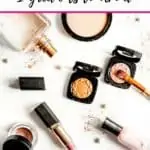
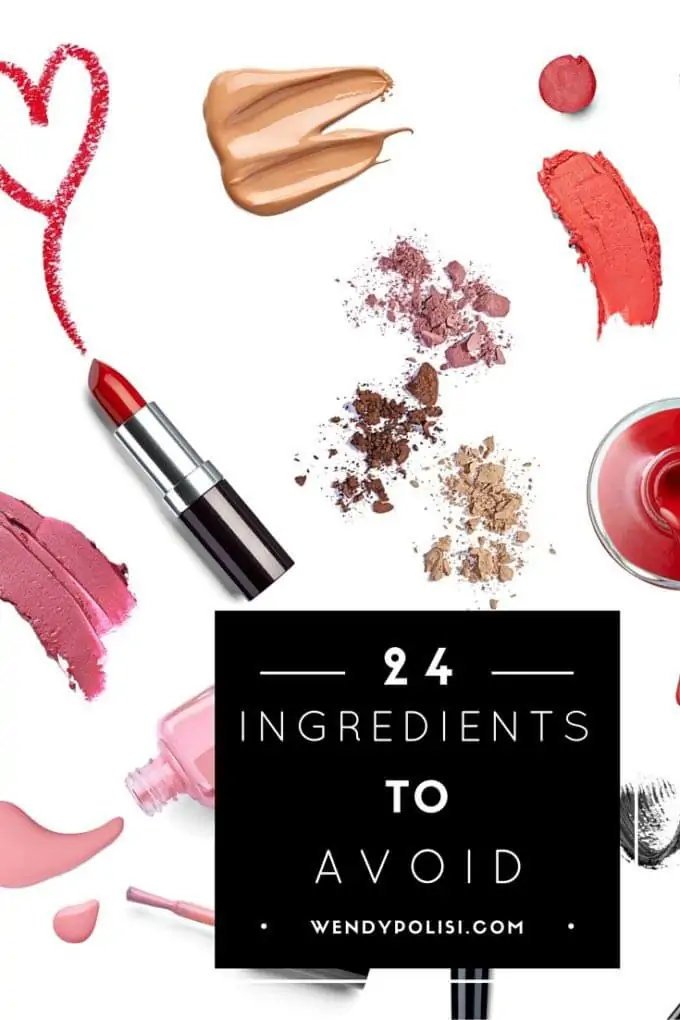
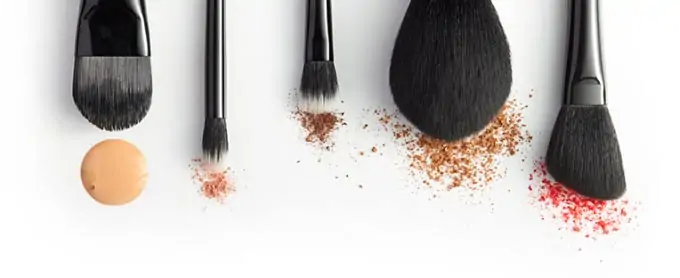

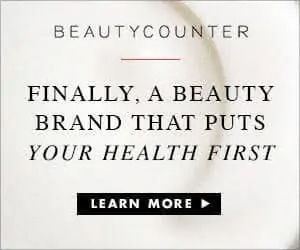

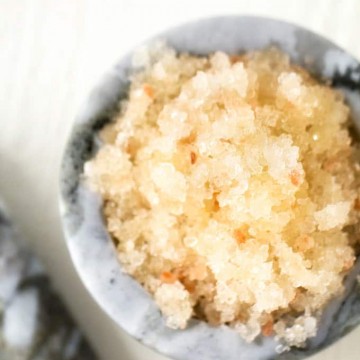
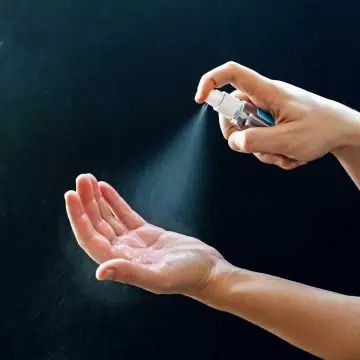
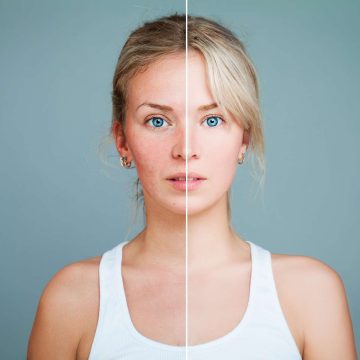
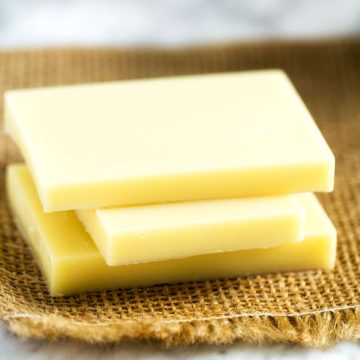
Eva
How can we avoid lead?